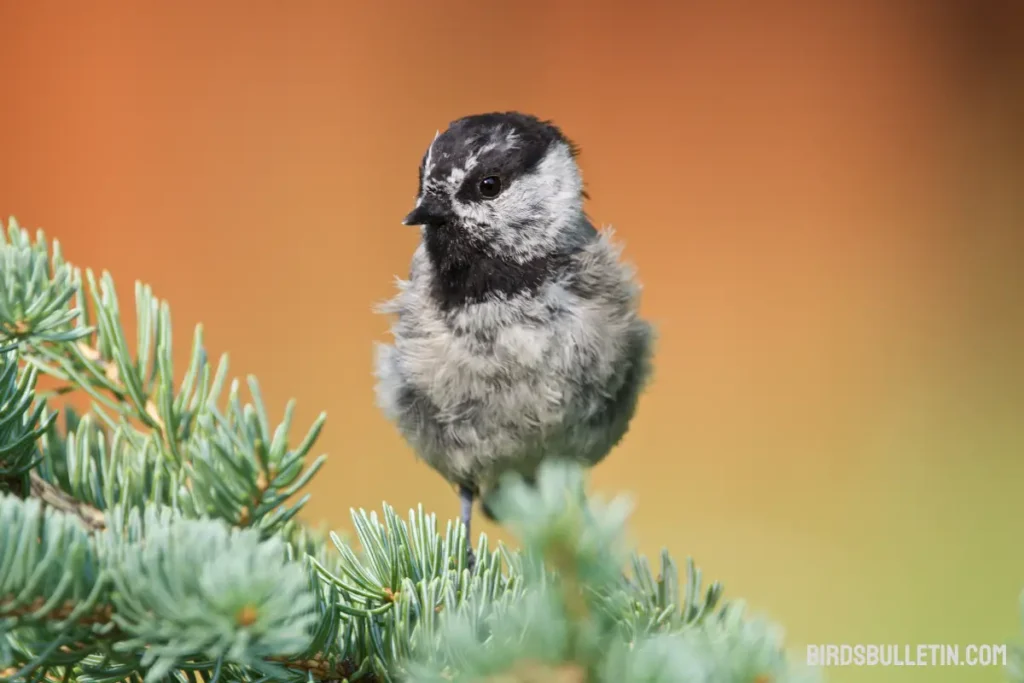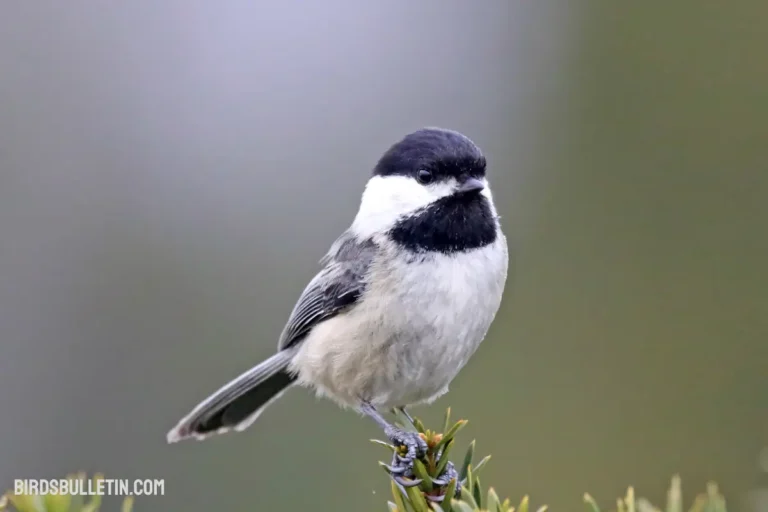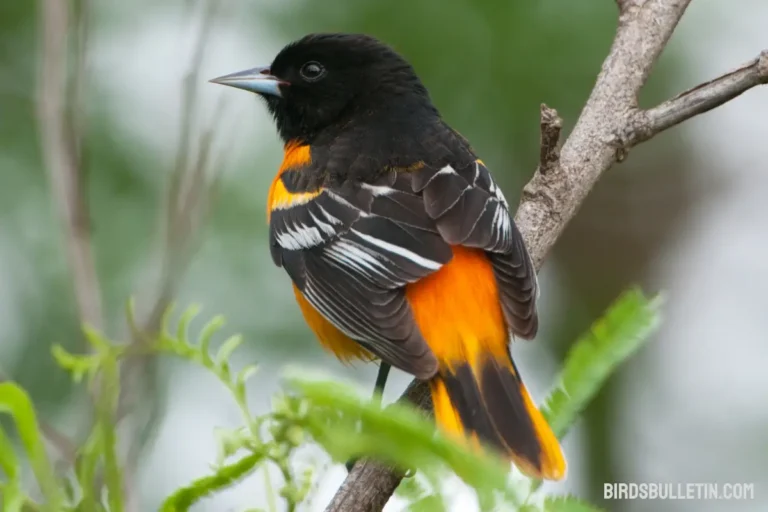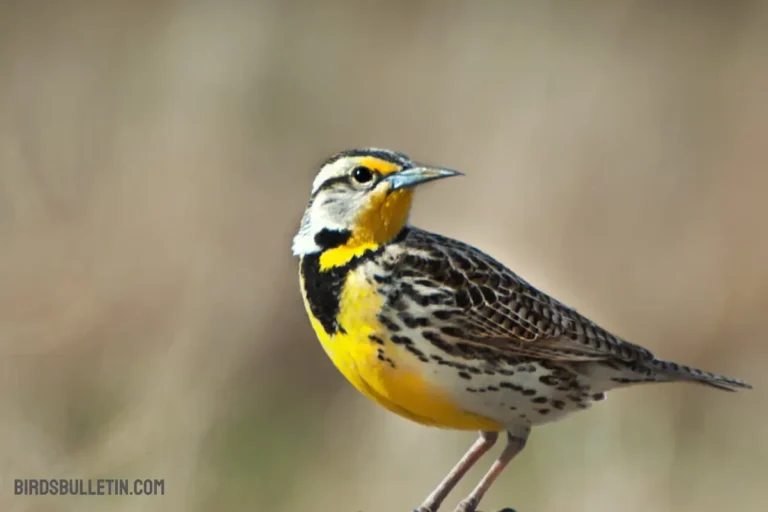Mountain Chickadee: Behavior And Nesting Guide
Nestled within the mountainous landscapes of North America, the Mountain Chickadee stands as a charming representative of avian diversity.
In this overview, we start on a journey to find out the intricacies of this bird’s life, from identification to conservation efforts, providing a holistic understanding of the Mountain Chickadee.
Want to learn more about Birds Overview
How To Identify A Mountain Chickadee?
The mountain chickadee (Poecile gambeli) is a small songbird native to the mountainous regions of western North America. Here is how to identify a mountain chickadee step-by-step:

01. Size: Mountain chickadees are tiny birds, measuring only 4.5-5.5 inches in length with a 7.5-inch wingspan. They weigh about 0.25-0.40 oz.
02. Coloration: These chickadees have a black cap and throat, white cheeks, and soft gray upperparts. Their underparts are white with buffy brown flanks.
03. Beak: Look for the short black beak typical of chickadees.
04. Song: Listen for the nasal, raspy “chick-a-dee-dee” song. Calls include a high “fee-bee” and a rattling “chirrr.”
05. Behavior: Mountain chickadees are active and acrobatic. Watch for them hanging upside down while foraging in trees.
06. Habitat: Find these chickadees in coniferous forests in mountain ranges, at elevations between 3000-9000 feet.
If you spot a tiny gray-and-black songbird in mountain forests with a chickadee-like song, chances are it’s a mountain chickadee!
Mountain Chickadee Profile
| Information | Description |
|---|---|
| Scientific Name | Poecile gambeli |
| Alternative Name | Alzheimer’s birds |
| Color | Gray back, wings, and tail; white underside with brownish flank patches |
| Size | 5-6 in (13-15 cm) |
| Wingspan | 7.5 in (19 cm) |
| Weight | 0.39 oz (11 g) |
| Lifespan | 2-5 years in the wild, recorded longevity 10 years |
| Breeding Season | April – July |
| Lay Eggs | 5-9 eggs per clutch |
| Diet and Prey | Insects, spiders, seeds |
| Threats and Predators | Hawks, owls, snakes |
| Locations | Rocky Mountains, Sierra Nevada, Cascade Range |
Is The Mountain Chickadee A State Bird Or Symbol?
The mountain chickadee is not the official state bird or state symbol of any U.S. state. However, it is the official bird of Creston, British Columbia. Some states within the mountain chickadee’s range have selected more iconic regional species for their state bird.
For example, Colorado’s state bird is the lark bunting, Idaho’s is the mountain bluebird, and Montana’s is the western meadowlark.
Mountain Chickadee Species And Subspecies
This bird is one of seven species in the chickadee genus Poecile. The Mountain Chickadee (Poecile gambeli) is generally recognized as a distinct species within the chickadee family (Paridae).
Nesting And Reproduction Of The Mountain Chickadee
Mountain chickadees nest in cavities in dead trees or snags. The female builds a nest of moss, grasses, spider webs, fur, and feathers. She lays 6-8 tiny white eggs with reddish-brown spots.
The female incubates the eggs for about 14 days. Chicks hatch bald and helpless but develop quickly. They fledge at 16-17 days old but stay with their parents for 2-3 weeks to learn how to forage on their own.
These chickadees can raise one or two broods per mating season from April to July. Pairs may stay together for multiple breeding seasons.
Population And Distribution Of The Mountain Chickadee
Mountain chickadees are common year-round residents along the Cascade and Sierra Nevada Ranges from British Columbia to southern California. They also live in the Rocky Mountains from Idaho and Montana to New Mexico and Arizona.
The total population is estimated at 7.5 million birds. Populations appear stable, and the mountain chickadee’s widespread distribution makes the species a species of Least Concern.
Migration Patterns Of The Mountain Chickadee
Unlike many songbirds, mountain chickadees do not migrate long distances. They are non-migratory and considered permanent residents across their range. In winter, family groups may make small-scale movements to lower elevations.
But most chickadees will tough out cold and snowy winters in their mountain conifer habitats. Their adaptations like thick feathers and storing food help them survive challenging winters.
Notable Behavior Of The Mountain Chickadee
Mountain chickadees display some interesting behaviors and adaptations:
- Flocking – Small flocks of 3-12 related birds forage together, communicating with calls. The dominant birds lead foraging and activities.
- Caching food – They cache insects and seeds in hiding spots during warmer months. Then rely on stored food during winter.
- Playful – These chickadees are very playful and curious. They often hang upside down and hover while foraging.
- Thrives in cold – Thanks to downy body feathers and storing fat in winter, they withstand freezing temperatures and storms.
Interactions With Humans And Other Species
Mountain chickadees may visit backyard bird feeders or nest boxes put up by humans. They mainly eat seeds, berries, and insects, relatively little human food.
They can become tame enough to eat from a person’s hand at feeders. Mountain chickadees may also join mixed winter foraging flocks with nuthatches, kinglets, and woodpeckers.
Conservation Status
The mountain chickadee is evaluated as a species of Least Concern on the IUCN Red List. It is common and widespread, with a stable population trend across its range.
No major threats to the species are known. Some localized impacts come from the loss of old-growth conifer habitat and competition from invasive bird species.
Laws Protecting Mountain Chickadees
In the United States, mountain chickadees are protected under the Migratory Bird Treaty Act of 1918. This makes it illegal to disturb or kill the birds, their eggs, or nests without a permit.
The species may also be protected under state and local laws in certain areas. Globally, it is evaluated as Least Concern and has no specific legal protections.
Frequently Asked Questions
01. What does the mountain chickadee’s song sound like?
The most recognizable mountain chickadee vocalization is their “chick-a-dee-dee” song, which has a raspy, whistled quality. Their calls also include a high-pitched “fee-bee.”
02. How long do mountain chickadees live?
The typical lifespan of a mountain chickadee is around 3 years. However, the longest recorded lifespan in the wild is over 12 years for this hardy songbird.
03. Do Mountain chickadees migrate?
No, mountain chickadees do not migrate and instead are considered permanent residents year-round in their mountain forest habitats. They may make small elevational movements in winter but do not make substantial migrations.
Final Word
With their tiny size, big personalities, and adaptability to harsh winters, the mountain chickadee is a beloved songbird of the mountainous west. Watch and listen for these active, noisy chickadees if you are hiking or camping in conifer forests above 3000 feet!
Conserving mature and old-growth forests will help ensure mountain chickadees continue to thrive.
References
- Cornell Lab of Ornithology. “Mountain Chickadee.” All About Birds. https://www.allaboutbirds.org/guide/Mountain_Chickadee
- McCallum, D.A. et al. (1999). “Mountain Chickadee (Poecile gambeli).” The Birds of North America. https://birdsna.org/Species-Account/bna/species/mouchi/
- Pruett, C. L., et al. (20XX). “Genetic Evidence for Divergence of Mountain Chickadee (Poecile gambeli) Subspecies.







